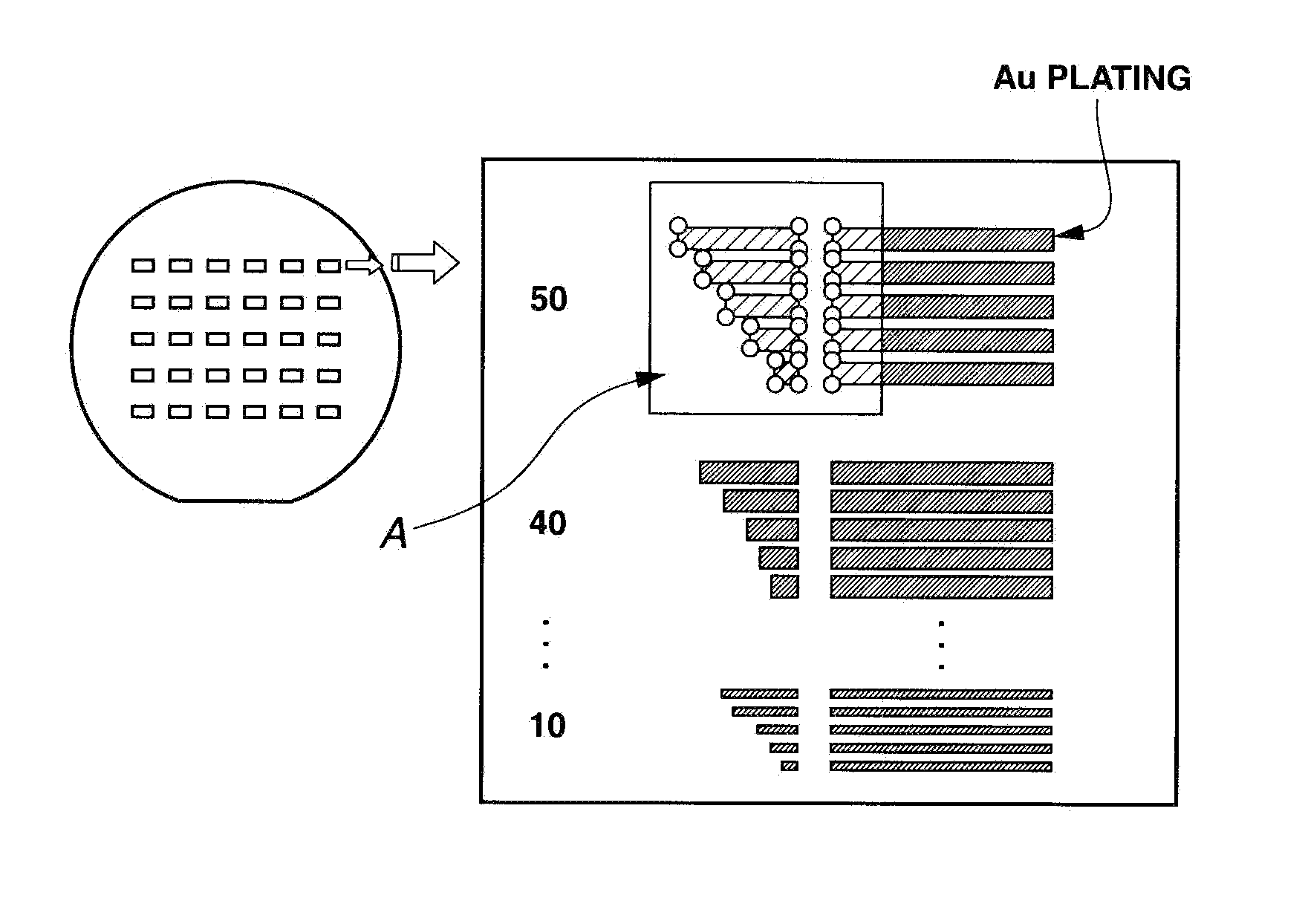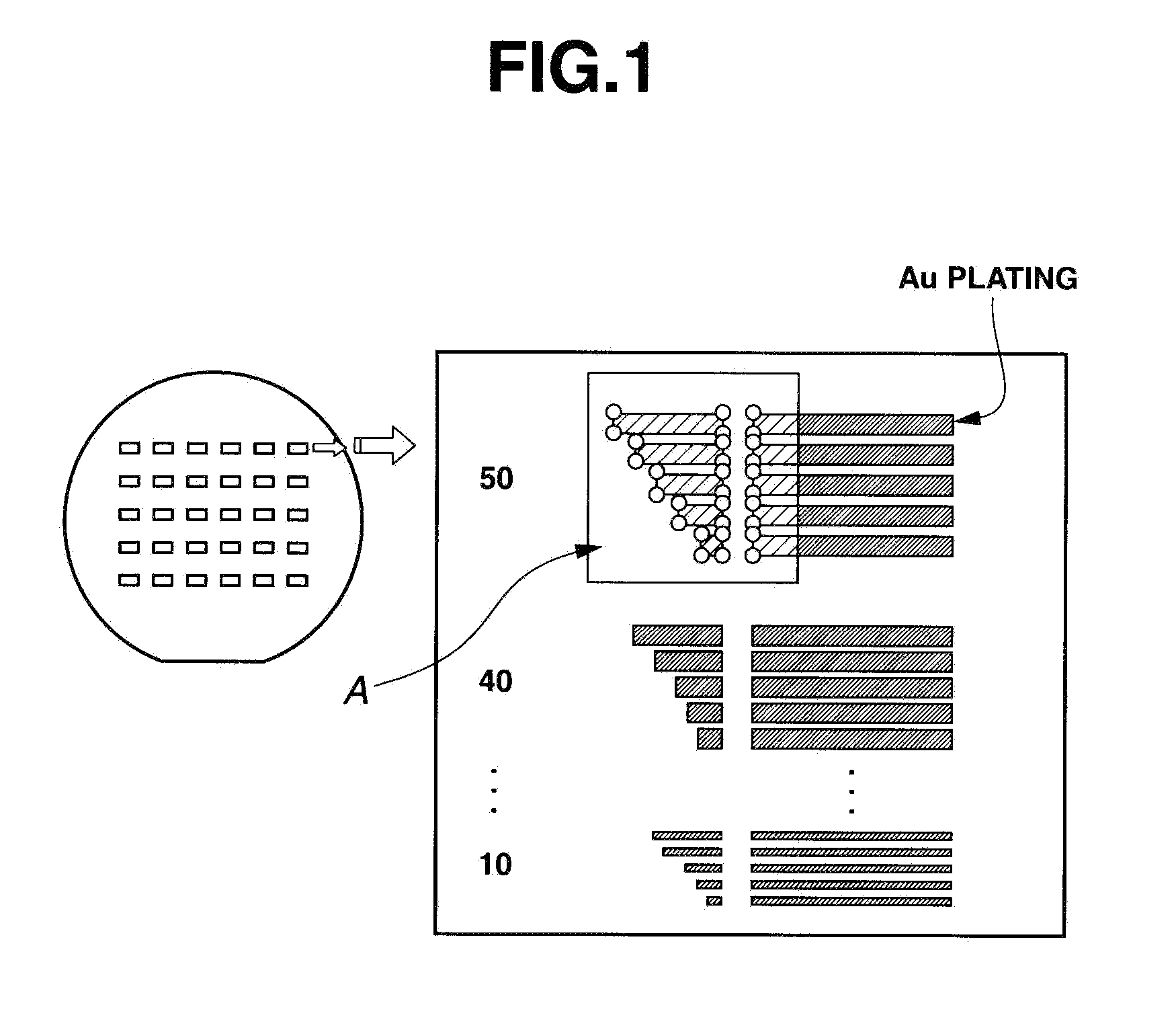Chemically amplified positive resist composition and patterning process
a positive resist and composition technology, applied in the field of chemically amplified positive resist composition and patterning process, can solve the problems of system, crack resistance during cracking, pattern deformation, and difficult to increase the integration density of bumps, etc., to achieve short development time, high sensitivity, and high degree of removal
- Summary
- Abstract
- Description
- Claims
- Application Information
AI Technical Summary
Benefits of technology
Problems solved by technology
Method used
Image
Examples
example
[0127]Examples of the invention are given below by way of illustration and not by way of limitation.
examples 1 to 12
[0128]A resist solution was prepared by selecting two polymers (Polymers 1 to 7 having recurring units identified below) as base resin, an acid generator (PAG-1 or PAG-2), a basic compound (Amine 1), a dissolution inhibitor (DRI-1), and a surfactant in accordance with the formulation shown in Table 1, dissolving them in propylene glycol monomethyl ether acetate (PGMEA), and filtering through a membrane filter having a pore size of 1.0 μm. The resist solution was spin coated onto a substrate (which was a 6-inch silicon wafer having gold deposited thereon by sputtering), and soft baked on a hot plate under the conditions shown in Table 2 to form a resist film having a thickness of 50.0 μm.
synthesis example
Synthesis of Polymer 9, Novolac Resin Having 2-naphthoquinonediazidesulfonyl Ester Group Substituted Thereon
[0130]A three-neck flask equipped with a stirrer, condenser and thermometer was charged with 75.7 g (0.7 mol) of p-cresol, 32.5 g (0.3 mol) of m-cresol, 52.3 g (0.59 mol) of 37 wt % formaldehyde aqueous solution, and 0.30 g (2.40×10−3 mol) of oxalic acid dihydrate as a polycondensation catalyst. The flask was immersed in an oil bath to keep an internal temperature of 100° C. at which polycondensation reaction run for 1 hour. At the end of reaction, 500 ml of methyl isobutyl ketone (MIBK) was added to the reaction solution, which was stirred for 30 minutes. The water layer was separated, and the MIBK layer having the product extracted therein was washed 5 times with 300 ml of deionized water, and separated. By vacuum stripping on an evaporator at 4 mmHg and 150° C., there was obtained 87 g of a novolac resin having a Mw of 6,200. Note that Mw was measured by GPC using columns o...
PUM
| Property | Measurement | Unit |
|---|---|---|
| wavelength | aaaaa | aaaaa |
| thickness | aaaaa | aaaaa |
| thick | aaaaa | aaaaa |
Abstract
Description
Claims
Application Information
 Login to View More
Login to View More - R&D
- Intellectual Property
- Life Sciences
- Materials
- Tech Scout
- Unparalleled Data Quality
- Higher Quality Content
- 60% Fewer Hallucinations
Browse by: Latest US Patents, China's latest patents, Technical Efficacy Thesaurus, Application Domain, Technology Topic, Popular Technical Reports.
© 2025 PatSnap. All rights reserved.Legal|Privacy policy|Modern Slavery Act Transparency Statement|Sitemap|About US| Contact US: help@patsnap.com



